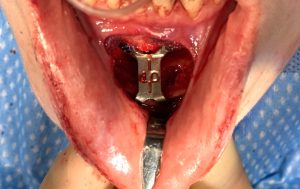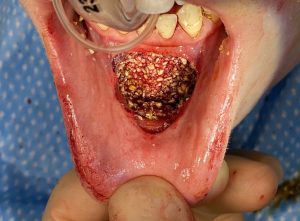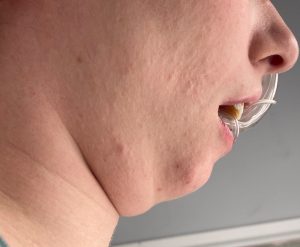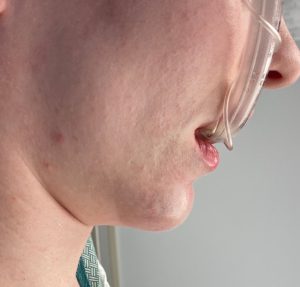Background: The differences between a chin implant and a sliding genioplasty go beyond the differences in the invasiveness of the surgery. While in small amounts of chin augmentation their aesthetic effects may be fairly similar, these changes when more significant chin augmentation changes are needed are different.
As a general guideline chin implants were designed and developed for aesthetic chin deficiencies. While the concept of an aesthetic chin deficiency can be debated, it is usually less than 10mms in lack of horizontal projection. In this deficiency range the chin bone is short but not significantly angled backwards. This allows the chin implant to sit on the bone and largely provide a horizontal augmentation effect.
In chin deficiency greater than 10mms the chin bone starts to angle backwards and become more confluent with the submental neck tissues. Placing a chin implant on this bone shape creates a downward effect as as a horizontal one, making the chin longer as well as not reflecting the amount of horizontal augmentation in millimeters that the chin implant is supposed to provide. This is where a chin implant typically aesthetically fails as any vertical lengthening effect in a short chin is always undesired.
The sliding genioplasty always works better in the significantly short chin as it creates the ability to provide greater amounts of horizontal augmentation, avoids the creation of any increased vertical length and can have a pronounced effect on the neck below it.
Case Study: This young female has a very short chin that was very bothersome to her. Even if the pandemic being largely over she continued to wear a facemark in public as camouflage for her very short chin. As measured by a vertical line dropped down from her lower lip, the soft tissue chin pad was 20mms behind it. Using computer imaging of different types of chin augmentation results in the profile view, she selected a 10mm movement.
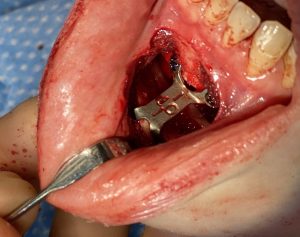
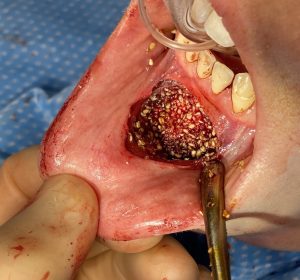
Her intraoperative result showed not only improved chin projection but also a significant improvement in the shape of her neck.
As well illustrated in this case of a young female with a very short chin, the sliding genioplasty can provide a powerful neck reshaping effect due to the pull of the attached muscles on the bone. In addition as the chin bone is moved forward it stretches out the attached soft tissues of the neck, unfolding it like an accordion onto a straighter line. These neck reshaping effects become more significant the bigger the chin bone movement is.
Case Highlights:
1) In significant chin augmentations a sliding genioplasty is preferred over a chin implant.
2) A sliding genioplasty has benefits to the direct submental region and the jawline that a chin implant does not.
3) With plate fixation the down fractured chin segment can be advanced centrally beyond the anterior edge of the superior chin segment.
Dr. Barry Eppley
Indianapolis, Indiana




